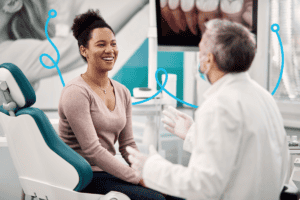There’s nothing quite as disheartening as being stood up, whether for a date or a dental appointment.
A patient not showing up for their appointment is a frustrating occurrence for you and your staff. You’ve committed the time and resources to a patient’s care, only to have them let you down.
Why do no-shows happen? How do they affect your practice? What can you do about them? These are all questions we hope to help you within this article.
Why Do No-Shows Happen?
Before we talk about the effects of no-shows, we should first examine why they occur.
It’s not out of malice. As much as it might feel that way, the patient isn’t sitting there saying “I think I will just skip my appointment today”. In fact, the most common cause of a patient not showing up for their appointment is that they simply forgot. It happens; human memory is fallible and appointments are often booked far before the date. Other common causes include patient schedule conflicts and miscommunication.
How Does Miscommunication Factor In?
Recently, Intiveo created a guide that goes in-depth on the costs of miscommunicating with your patients (in both English and French). In this guide, we discuss a recent figure that indicates that 31% of all dental appointments get missed. What this means is that no-shows should be costing your practice, personally, up to $3,000,000 a year.
However, these are not the costs no-shows can have for your practice. No-shows can also have a significant cost in terms of logistics and the emotional well-being of your practice. Mainly, what we see is an over-inflated workload, where tasks have to be repeated, such as:
This additional work encompasses tasks such as:
- Coordinating follow-ups for individuals who failed to attend their scheduled visits
- Arranging new appointment times
- Reinitiating the communication sequence for appointment confirmations and reminders
- Ensuring patients receive precise pre-appointment guidelines
In reviewing these tasks, we can see how the repetitiveness of them contribute to the emotional burden of no-shows. The emotional underpinnings of no-shows are far-reaching.
In the realm of healthcare – and dentistry is no exception – the emotional costs incurred due to no-shows include:
- Clinicians experiencing heightened stress levels
- A decline in patient satisfaction
- Erosion of job satisfaction and equilibrium between work and private life
- Deterioration in patient care quality
Specifically, staff may find themselves repeatedly rectifying errors stemming from missed visits, inevitably eating into their personal time or necessitating extended working hours. Such high demands pave the way for exhaustion and can result in valued employees ultimately vacating their positions.
It’s important to consider how miscommunication factors into the equation with no-shows. Creating a strong messaging cadence goes a long way towards mitigating no-shows – reducing financial, logistical, and emotional costs at your practice.
Intiveo offers numerous resources like our guide to dental practices. Subscribe at the top right for more!
How Do No-Shows Affect Your Practice?
No-shows are a real downer on your entire office. They can affect your practice in many key ways.
First, it’s obviously a monetary loss when the patient does not show up. It is estimated that no-shows in the USA cost the health industry $150 billion on an annual basis, with an average of $200 lost per time slot. Practices cannot take this kind of loss on a regular basis.
Even setting aside the financial cost, no-shows can have a detrimental effect on your workplace. A patient not bothering to show up can feel like a personal slight against you, which leads to lower morale. With lower morale, the quality of work can suffer, creating a worse experience for your patients who do show up. Your patients deserve better care than that and so do you!
How Can You Reduce No-Shows?
Given that no-shows are detrimental to your practice, the question everyone asks is “how can I keep this from happening?”. Now that we are armed with the knowledge that the most common reason for no-shows is simple forgetfulness, the clear solution is to send appointment reminders to your patients.
Sending out simple reminders is an easy way to make sure patients remember they have an upcoming appointment. This gives them a chance to make sure their schedule is still clear and that the time works for them. No more forgotten appointments! You’ll see a significant reduction in the rate of no-shows.
However, having your staff spend all day on the phone trying to get confirmations can still cause patients to slip through the cracks and lead to staff burnout. The answer; automated reminders!
The Intiveo Solution
Intiveo understands your desire to cut down on patient no-shows and improve the office experience. Our software allows you to send automatic appointment reminders to your patients via phone, email, and even text. Every patient will get the experience that works best for them. Plus, the reminders are entirely customizable!
Your patients will appreciate the efforts to remind them and make their experience an easy one. Interested in reducing no-shows? Book a meeting today to learn more!






